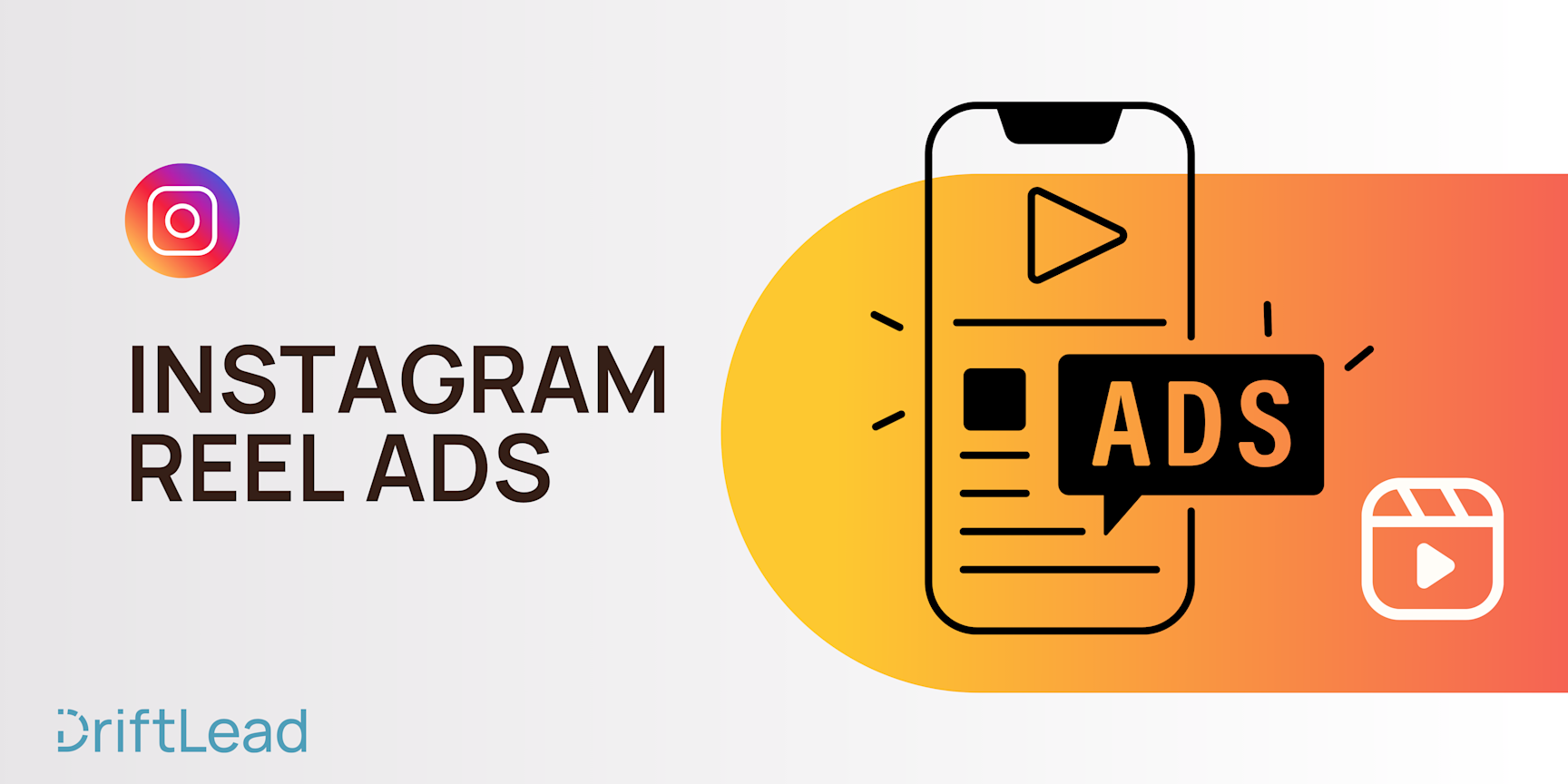Product Launch Strategy: Steps to Ensure a Successful Release
21 Nov, 2023
Uncover key steps for a successful product launch strategy with our guide, featuring PR strategies, influencer partnerships, and more

Jump to:
Hop on our weekly newsletter train! We're sharing tips so stellar, we're practically job-threatening ourselves!
You've probably heard the old adage, "If you build it, they will come." But let's face it, in the bustling bazaar of today's market, building a great product is just half the battle. The other half? Making sure people actually show up for the grand unveiling. 🎉👀
In the realm of product launches, there's no magical field of dreams where simply creating something amazing guarantees a lineup at your virtual (or physical) doorstep. It's about crafting a strategy as innovative and compelling as your product itself. So, buckle up! We're about to dive into the world of product launch strategies, where the perfect blend of planning, pizzazz, and practicality can turn your 'next big thing' into the talk of the town. 🚀
Creating a Buzz-Worthy PR Strategy
One of the most effective ways to set the stage for your product's grand debut is to unleash a dynamite PR strategy. Here are some steps on how to do just this:
Craft a Compelling Story: Every product has a story. Yours could be about solving a problem, innovating an industry, or simply bringing joy. Find the heart of your product's story and express it in a way that resonates with your audience.
Identify Key Media Contacts: Not all journalists are created equal when it comes to your product. Research and build a list of media contacts who cover your industry or have shown interest in similar products. Personalize your pitches to their interests and past work.
Leverage Social Proof: If you have beta testers or early reviewers, use their testimonials to add credibility. Quotes from real users can be powerful in press releases and pitches.
Create a Press Kit: Assemble a comprehensive press kit with high-quality images of your product, a backgrounder on your company, product details, and contact information. Make it as easy as possible for journalists to write about you.
Plan Your Timing: Timing is crucial. Align your PR activities with industry events, holidays, or other relevant dates. Avoid launching when you'll be overshadowed by bigger industry news.
Follow Up, But Don't Spam: After sending your initial pitch, it's okay to follow up once or twice, but respect the journalists' time. Spamming them with emails is a surefire way to end up in the spam folder.
Prepare for Different Outcomes: Not every story will be picked up. Have plans for both best-case and worst-case scenarios. Be ready to pivot your strategy if you're not getting the traction you hoped for.
Integrate with Social Media: Amplify your PR efforts with a coordinated social media campaign. Tease content, share behind-the-scenes looks, and engage with your audience to build excitement.
Monitor and Respond: Once your story is out there, monitor its pickup and engage with any conversation around it. Quick responses to comments and questions can further boost engagement.
Evaluate and Adapt: Post-launch, analyze the impact of your PR strategy. What worked? What didn't? Use these insights to refine your approach for future launches.
Leveraging Product Hunt and Similar Platforms
In the digital cosmos, Product Hunt isn't just another platform; it's often the launchpad for viral PR campaigns, a magnet for hungry investors, and a spotlight for innovative products craving market attention. 🚀🌟 Here's how to harness the power of Product Hunt and similar platforms to catapult your product into the stratosphere:
Understand the Community: Each platform has its own unique culture and user base. For Product Hunt, it’s a community of tech enthusiasts, early adopters, and industry influencers. Tailor your approach to resonate with these audiences.
Timing Is Key: The timing of your launch on these platforms can significantly impact its success. Research the best days and times to post (typically, weekdays are better than weekends) and plan your launch accordingly.
Create an Engaging Launch Post: Your post should be captivating yet informative. Include clear, high-quality images or videos, a compelling description of your product, and its unique selling points. Think of this as your digital storefront window.
Gather Support: Rally your network to support your launch. Encourage your team, friends, and early users to upvote and comment on your post. Genuine enthusiasm is contagious!
Engage with the Community: Be active in the comments section. Answer questions, thank users for feedback, and engage in discussions. This not only helps in building rapport but also gives you valuable insights.
Exclusive Offers for Platform Users: Consider offering exclusive access, discounts, or features for users from these platforms. This can drive more interest and conversions.
Cross-Promote on Other Channels: Use your social media, email lists, and other marketing channels to drive traffic to your Product Hunt page. However, be careful with direct links as some platforms have algorithms that may not favor campaigns that drive traffic directly to the voting or comment sections.
Leverage Influencer Partnerships: If possible, collaborate with influencers in your niche who are active on these platforms. Their endorsement can significantly boost your visibility and credibility.
Monitor and Adapt: Keep an eye on how your product is being received. Be prepared to adapt your strategy based on user feedback and engagement metrics.
Post-Launch Strategy: Your efforts shouldn’t end with the launch day. Plan how you'll continue to engage with the community and keep the momentum going. Regular updates about your product's journey post-launch can keep the community invested in your success.
Mastering Your Advertising Strategy
Launching a product is like putting on a Broadway show – the lights, the audience, the anticipation – it all comes down to how well you've orchestrated your advertising strategy. 🎭💡 Here's how to ensure your advertising hits all the right notes and turns your product launch into a standing ovation:
Define Your Audience: Know who you're performing for. Understanding your target audience – their interests, needs, and behaviors – is crucial. It's the equivalent of choosing the right script for the right crowd.
Select the Right Channels: Not all stages are the same. Identify which advertising channels (social media, search engines, tv, etc.) best align with where your audience spends their time (generally, your best bet is to instate many of these).
Craft Compelling Messages: If the world hasn't seen your product yet, it's even more crucial that you are able to get them to understand what it is and why they need to have it. Ensure that your messaging is engaging clear, and speaks directly to the needs and desires of your audience. It's about delivering a message that resonates and sticks.
Utilize Visuals Effectively: Strong visuals can make or break your ad performance. Whether it's high-quality images, engaging videos, or eye-catching graphics, make sure they capture the essence of your product and brand.
Allocate Budget Wisely: Like any good production, budget allocation is key. Determine how much you're willing to spend on each channel and adjust based on performance. It's about getting the most out of every dollar for a blockbuster release.
Leverage Retargeting: Sometimes, the audience needs a gentle reminder. Use retargeting strategies to re-engage users who have shown interest but haven't converted yet. It's like giving them a second ticket to the show.
Incorporate A/B Testing: Especially when your product or business is brand new, you probably don't really know yet what the most successful image, message, CTA, or angel is going to be. Use split testing to test diferent things and see what resonates. Not only will this help improve the performance of your campaigns, but it can also be a great way to test a new logo, brand color, aesthetic, or feature.
Monitor and Adapt: Keep a close eye on how your ads are performing. Use analytics to track success and be ready to tweak your strategy for better results. It's about making real-time adjustments backstage.
Post-Launch Follow-Up: The show must go on even after the curtains close on launch day. Continue to engage your audience with follow-up campaigns that keep the momentum going.
Launch Parties & Events
Imagine the excitement of a red-carpet premiere. That's the kind of buzz you want to create with your product launch events. Whether it's a swanky in-person gala, an online live-stream, or a hybrid of both, launch events are where your product steps into the limelight. Here's how to make your product's debut a blockbuster event:
Setting the Stage: Choose a venue or platform that aligns with your product's personality. For tech products, a sleek, modern space or a cutting-edge virtual platform could work great. For lifestyle brands, perhaps something more intimate and experiential.
Invitations with Flair: Your invites should be as enticing as the event. Use eye-catching designs and intriguing copy that sparks curiosity and excitement.
Creating an Experience: People remember experiences, not just products. Incorporate interactive elements, demonstrations, or immersive experiences that embody your product's essence. It's about engaging your guests in a narrative that revolves around your product.
Celebrity or Influencer Appearances: Just like a star-studded movie premiere, having well-known personalities can elevate your event's profile. If it aligns with your brand, invite influencers or celebrities to add a touch of glamour and buzz.
Media Coverage: Get the press involved to amplify your event's reach. Reach out to industry journalists, bloggers, and influencers to cover your event. Live social media coverage can also boost your event's visibility in real-time.
Branded Swag: Everyone loves goodies! Provide branded merchandise that's not just promotional but also useful or unique. It should be something that keeps your brand in their mind long after the event.
Engaging Presentations: Whether it's a keynote speech or a product demo, ensure that the presentation is engaging, informative, and aligns with your brand's voice. Think TED Talk, not a sales pitch.
Follow-up Engagement: Post-event, keep the conversation going. Share highlights, thank attendees, and provide exclusive post-event offers or information to maintain engagement and build a community around your product.
Memorable Closing: End your event with something memorable – a striking visual, a compelling announcement, or even a surprise guest. Leave your guests with a lasting impression of your brand and product.
Direct Sales: The Personal Touch in Your Launch Strategy
Ah, yes...you probably were hoping this one wouldn't be included and that your world-class advertising campaign (talk to us about getting this set up) would do all the heavy lifting for you. But unfortunately, as part of your product launch, you'll probably have to do some good old-fashioned selling. Not just because you need to start gettings some customers, but because having those initial conversations with prospects can be an excellent way to learn about your audience and make any additional refinements to your product. Here is how to get selling the right way.
Targeted Demos and Presentations: Organize direct sales events where potential customers can experience your product firsthand. Whether it’s a pop-up booth in a busy shopping area or scheduled demonstrations at relevant venues, let people touch, feel, and use your product.
Training Your Sales Team: Ensure that your sales team is well-versed in every aspect of the product. They should be able to answer any question thrown at them and be adept at highlighting the product's unique selling points. Think of them as your product's ambassadors.
Personalized Follow-ups: After initial contact, a personalized follow-up can make a big difference. Whether it’s a phone call, an email, or even a handwritten note, reaching out personally can turn a maybe into a yes.
Leveraging Existing Networks: Utilize your existing business networks to introduce your product. Reach out to current clients or customers who trust your brand and might be interested in your new offering.
Bundle Offers: Create special bundle offers for direct sales. Combining the new product with other products or services can provide added value that's hard to resist.
Feedback Collection: Use direct sales interactions as an opportunity to gather immediate feedback. This firsthand information can be incredibly valuable for tweaking your product or strategy.
Creating Urgency: Limited-time offers or launch specials can create a sense of urgency. Encourage on-the-spot decision-making with exclusive deals for early adopters.
Referral Programs: Encourage word-of-mouth marketing by implementing a referral program. Reward customers who refer your product to others, creating a multiplying effect.
Local Community Engagement: Engage with local communities and groups. Sometimes, the most loyal customers can be found right in your backyard.
Seamless Purchasing Process: Ensure that the purchasing process is as smooth as possible. Whether it’s a simple ordering form or an efficient online checkout process, reducing friction in the buying process is key.
Influencers and Partnerships
Influencer marketing has become a cornerstone of modern product launches, akin to having popular kids in school rave about your new sneakers. It’s about leveraging the reach and trust that influencers have built with their audience to amplify your product's visibility. Here’s how to effectively integrate influencers and partnerships into your launch:
Identify the Right Influencers: It's not just about numbers; it's about relevance and engagement. Find influencers who align with your brand values and have an audience that matches your target demographic. Think of it as finding your brand’s soulmates in the influencer world.
Build Genuine Relationships: Before jumping into business, cultivate genuine relationships with potential influencers. Comment on their posts, engage in conversations, and show genuine interest in their content. It’s like courting before popping the big question!
Create a Compelling Pitch: Your pitch to influencers should be as enticing as your product. Highlight what makes your product unique and how partnering with you can benefit them and their audience. Think of it as selling your vision, not just your product.
Negotiate Mutually Beneficial Agreements: Collaborate on terms that benefit both parties. This could include free products, commissions, or a fixed fee. Ensure the agreement is clear on deliverables, expectations, and timelines.
Co-create Content: Work with influencers to co-create content. This ensures that the content fits their style while effectively showcasing your product. It's a collaborative art project where both the artist and the sponsor shine.
Leverage Diverse Platforms: Don’t just stick to one platform. Utilize a mix of social media channels like Instagram, YouTube, TikTok, etc., based on where your target audience hangs out the most.
Track and Measure Impact: Use tracking links and specific campaign hashtags to measure the impact of your influencer partnerships. This helps in understanding ROI and can guide future collaborations.
Engage with Partner Content: Actively engage with the content influencers post. Comment, share, and show your support to increase the visibility of the posts.
Encourage Authentic Reviews: Allow influencers the creative freedom to give honest reviews. Authenticity resonates more with audiences than scripted praise.
Long-term Partnerships: Instead of one-off promotions aim for long-term partnerships with influencers. This builds a more credible association with your brand and keeps your product in the public eye for longer.
Pre-Launch Waitlist Creation and Lead Nurturing:
The journey to a successful product launch isn't just about the big reveal; it’s also about the enticing build-up. Creating a pre-launch waitlist and nurturing these leads is akin to crafting a captivating novel that keeps readers eager for the next chapter. Here’s how to effectively build and nurture a pre-launch waitlist:
Develop a Compelling Landing Page: Your landing page is the gatekeeper of your waitlist. Design it to captivate and inform, highlighting the unique selling points of your product. Use enticing visuals, engaging copy, and clear calls-to-action (CTAs) to encourage sign-ups. It’s the appetizer that leaves your audience craving the main course.
Offer Exclusive Benefits: Give potential customers a reason to join the waitlist. This could be early access, special discounts, or exclusive bonuses for waitlist members. It’s like offering a backstage pass to a concert - a tempting prospect for any fan.
Use Social Proof: Leverage testimonials, endorsements, or media mentions to build credibility and trust. Social proof can significantly increase the perceived value of your product and the desire to be part of the exclusive group that gets first access.
Engage with Email Marketing: Once someone signs up for your waitlist, the relationship-building process begins. Use email marketing to send regular updates about the product development, behind-the-scenes content, or exclusive insights. Keep your audience engaged and excited about the launch.
Leverage Social Media: Use your social media platforms to drive traffic to your waitlist. Share snippets of your product, teasers, and stories that build a narrative around your upcoming launch.
Segment Your Audience: Not all waitlist members are the same. Segment your list based on engagement level, demographics, or any other relevant criteria. Tailor your communications to each segment to ensure relevancy and higher engagement.
Create a Sense of Urgency: Use countdowns, limited-time offers, or reminders of the exclusive nature of the waitlist to create a sense of urgency. Encourage your audience to act fast to not miss out.
Gather Feedback: Use this pre-launch phase to gather feedback. Conduct surveys, ask for opinions, or hold Q&A sessions. This not only provides valuable insights but also makes your audience feel involved in the product development process.
Run Targeted Ads: Use targeted advertising to reach potential customers who haven't discovered your product yet. Direct these ads to your landing page to increase your waitlist sign-ups.
Prepare for the Launch: As the launch date approaches, intensify your communication. Share final teasers, launch event invitations, or special announcements to keep the excitement at its peak.
Content Marketing: Blogs, Videos and More
In the age of information overload, cutting through the noise with compelling content marketing is like being the lead singer at a rock concert. It's all about capturing the audience's attention and keeping them engaged. Here’s how you can use blogs, videos, and more to weave a compelling story around your product:
Start with a Content Strategy: Before you dive into creating content, have a strategy. Identify your target audience, their interests, pain points, and how your product fits into their lives. It's like setting the stage before the big performance.
Blogging: Your Brand’s Voice: Blogs are the cornerstone of content marketing. They provide valuable information, tell your product's story, and improve your website’s SEO. Write about topics related to your product, industry trends, or how-to guides. Each blog post is a chapter in your brand's narrative.
Engaging Videos: Videos are a powerful medium to showcase your product in action. Create demo videos, behind-the-scenes glimpses, or customer testimonials. Videos can humanize your brand and create an emotional connection with your audience. It's the visual encore that leaves a lasting impression.
Infographics and Visual Content: Some people digest information better visually. Create infographics, charts, or animated explainer videos to convey complex product information simply and engagingly. It’s like translating a technical manual into a comic book.
Podcasts and Webinars: These platforms offer a more personal way to connect with your audience. Host podcasts discussing industry trends or webinars demonstrating your product. It's a chance for your audience to hear directly from you, adding a personal touch to your brand.
Social Media Snippets: Use social media to share snippets of your content, create short stories, or share quick tips related to your product. It’s a way to keep your audience engaged and drive traffic back to your website.
User-Generated Content: Encourage your audience to create content around your product. It could be a review, a testimonial, or a creative use of the product. This not only provides you with content but also builds community and trust.
Interactive Content: Create quizzes, polls, or interactive videos to engage your audience actively. Interactive content can provide valuable insights into your audience’s preferences and behaviors.
Email Newsletters: Use email newsletters to share your latest blog posts, videos, and other content directly with your audience. It's a direct line to your audience's inbox, keeping your brand at the top of their mind.
Consistency is Key: Whatever content you choose to create, be consistent. Regular updates keep your audience engaged and help build a loyal following.
Customer Support and Feedback
Of course, with a new product, customer support and feedback are pivotal to making or breaking your launch strategy.
Establishing clear channels for feedback, such as surveys or feedback forms, allows customers to voice their opinions. And don't just collect feedback – act on it. This shows that you value their input and are committed to evolving and will help you improve the quality of your product.
And let's not forget the power of communication. Keeping your customers in the loop about the changes you're making based on their feedback builds trust. It shows a brand that listens and adapts. Training your team to handle feedback with empathy and efficiency turns customer support into an art form – one that resonates with and retains customers.
Closing Thoughts
From sparking initial buzz with PR to the grand finale of a launch event—each component plays its vital role in the symphony of your product's debut.
But, let's face it, navigating these waters can sometimes feel like trying to solve a Rubik's cube in the dark. That’s where we come in. At DriftLead, we’re all about turning the complex into the achievable.
So, if you're gearing up for a product launch and need a compass to guide you through, don't hesitate to reach out. Click here for a free marketing plan tailored just for you, because in the world of product launches, a strategic partner can be the difference between a ripple and a wave. Let’s make your next product launch the talk of the town. 🚀🌟






